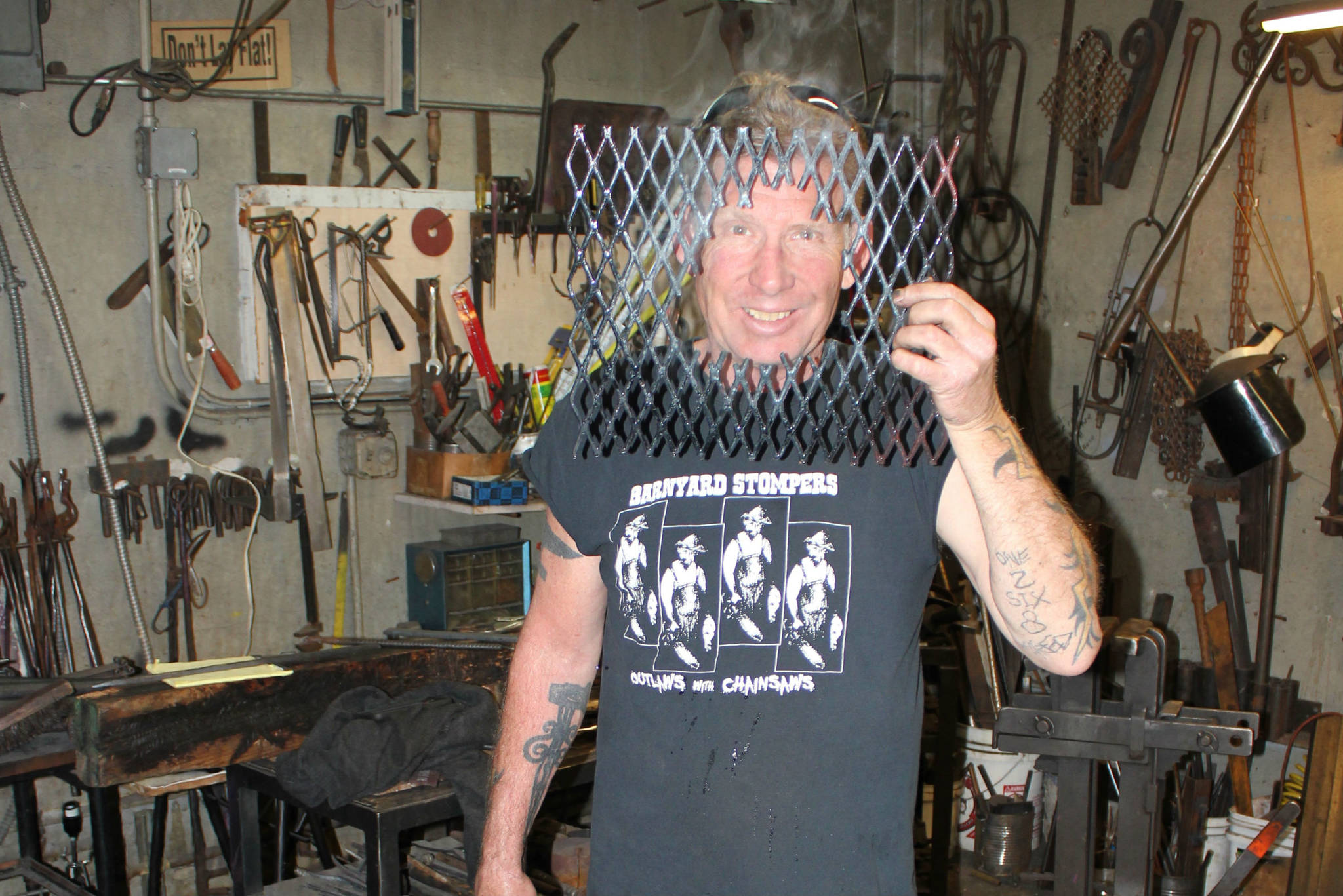When the news broke that the Belltown blacksmiths, Mary Gioia and Louie Raffloer, faced a 60-day lease-termination notice, a familiar sinking feeling struck artists and music fans well beyond Seattle. Gioia and Raffloer’s alley-access shop, Black Dog Forge, earned notoriety for one often-recited piece of its history: Starting back in the early 1990s, an all-star roster of bands, including Pearl Jam and Soundgarden, practiced in its basement.
That story is a kind of chorus in the song of Black Dog Forge, regularly heard by tourists, music fans, and Seattle history buffs. But now Gioia and Raffloer are singing another familiar tune, one that’s been playing for decades around Seattle. It’s a song about development. About gentrification. That song’s annoying as hell, and it’s gotten stuck in everyone’s head. But when the mic drops, Seattle artists get forced off the stage.
As West Seattle-based photographer and former Belltown resident Alice Wheeler sees it, “Black Dog Forge might be the last remaining bit of Belltown left from when it was the Wild West artist neighborhood of the 1980s.”
On a sunny day shortly after word gets out about the move-out notice, I talk with Gioia and Raffloer outside Black Dog Forge. The alley teems with an almost constant flow of life, while the shop’s pair of dobie-coonhounds watch over anyone ambling by. Gioia and Raffloer now live outside Belltown, but their presence during business hours provides a welcome sense of authenticity in an increasingly stylish and detached neighborhood. They respond to respect with real warmth. It doesn’t take long to perceive that their roots run deep down into Belltown’s bedrock.
“This was once an extremely thriving artistic community,” Raffloer says of Belltown. Raffloer describes the pre-Black Dog Forge cliques of artists that anchored the neighborhood in the ’80s and ’90s, such as the “Subterranean Cooperative of Urban Dreamers” (SCUD) collective that turned the building at the corner of Western Avenue and Wall Street into a sprawling arts space.
When Raffloer began renting part of the current Black Dog Forge space in 1989, he got a 12-foot-by-12-foot space for $75 a month. Eventually that expanded, and soon enough bands were practicing downstairs.
Belltown’s evolutionary chapters go all the way back to the neighborhood’s origins. The namesake land claimer, William Bell, arrived in 1851 with Seattle’s original band of white settlers, the Denny Party. Bell picked his ludicrously large and eventually valuable hunk of acreage from the waterfront, named a slew of streets after his kids and relatives, and quickly bolted for Portland in 1855. Fascinating footnotes—like the concentration of dozens of silent-movie-era film exchanges within a few Belltown blocks and the eventual creation of a bohemian safe space—get buried beneath the layers of what’s growing there now, growth that is a direct result of development-friendly zoning in the mid-’70s meant to stimulate high-rise residential construction.
Examples of a changing Belltown abound. In early February, an architectural firm at the corner of Third and Battery bought the just-under-2,000-square-foot building next door for $14 million; that building’s 2017 tax assessment was less than 10 percent of the sale price, or $1.2 million. Nearly every Belltown building’s tax assessment I looked at has at least doubled since the Great Recession. For good or ill, that means that Belltown is now a landscape filled with millionaire building owners poised to cash in on Seattle’s real-estate bonanza.
Talk of gentrification can be genuinely frustrating. I learned that and more when I sat down just outside Seattle Center during Folklife with Jaimee Garbacik and Joshua Powell, editor and illustrator of the recently released anthology Ghosts of Seattle Past. They grew into the role of advocates for what Seattle’s losing while building their own human networks as motivated transplants. Yet when we tried to reach a consensus on what this all means, we mainly shared only frustration.
“Nobody knows how to plan a city, so many people are so certain that they’ve got this right,” Powell says. “That’s why these conversations keep coming up.”
“If you aren’t thinking about how homogenous [Seattle’s] getting, you can’t possibly do anything to help because you’re not even aware that it’s happening,” Garbacik offers.
Please take that, as I did, as encouragement for Seattleites to embrace nostalgia and speak up about the city’s evolution. Artists make lousy urban planners, but urban planners can also make lousy urban planners. As can city governments, business developers, or any of the individual stakeholders in a landscape of opinions and objectives. Learning about the experiences of businesses like Black Dog Forge in a neighborhood formerly thick with artists and artisans might just help to tell a better story of why the city’s edges needn’t been smoothed so uniformly.
The changes ahead for Black Dog Forge include a move date of August 1, preceded by a casual party and sale on Saturday, June 17. The much larger final party will be on Saturday, June 24.
Gioia and Raffloer are also starting a fundraising campaign to cover the costs of relocation and lost time for actual work. “We’re going to launch our own,” Raffloer said. “For people who care less about the legacy and care more about us.” You can and should find them on social media and the current (and possibly future) GoFundMe funding streams.
There’s still romance in nostalgia for places and times you never personally experienced. A bohemian Belltown might never be seen again in Seattle. That’s a poetic injustice—one you can do something about, for what’s seeming like a limited time only.
news@seattleweekly.com





